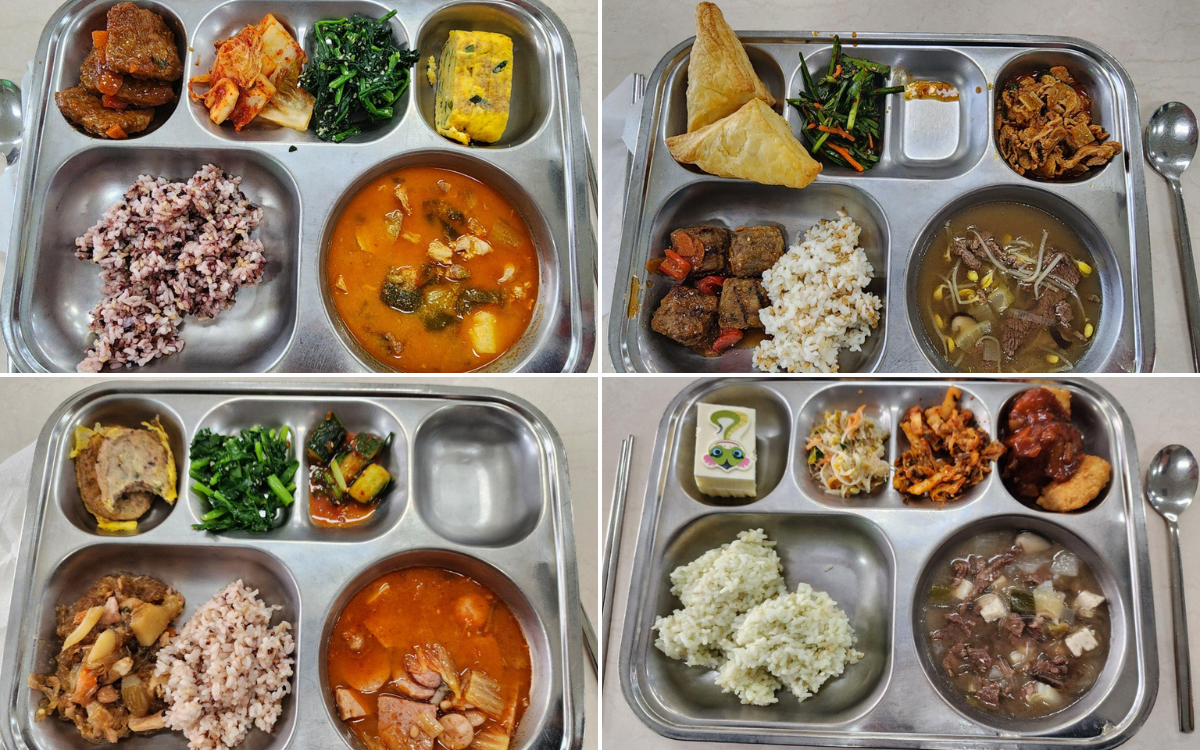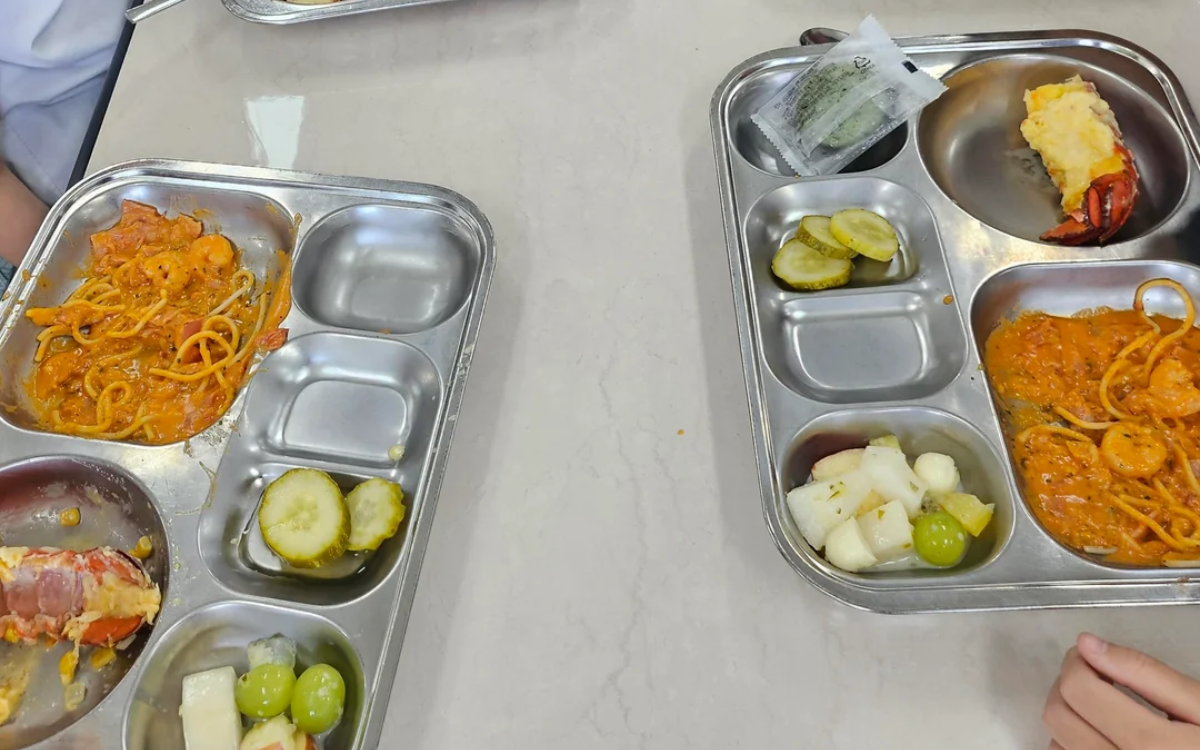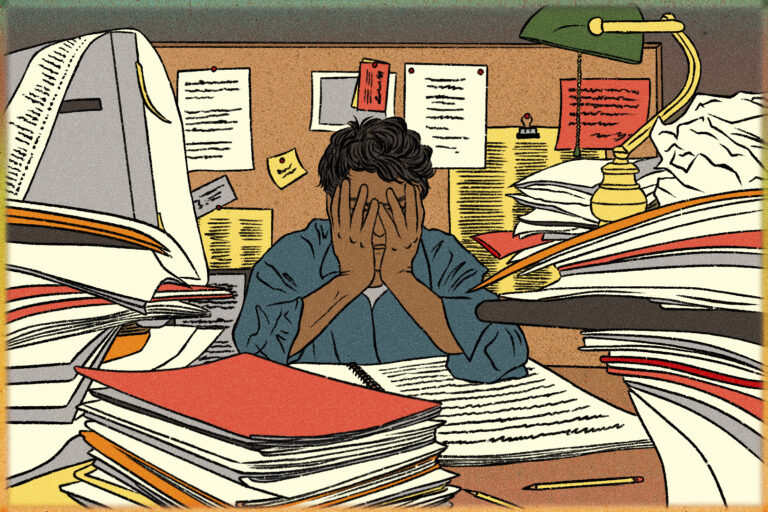
An American working as a teacher in South Korea has shared photographs showing how different school lunches are there to the ones he had growing up.
William Pacheco is an elementary school teacher at Keisung Primary School in Daegu, South Korea. He’s been living in South Korea for over 15 years now but grew up in Jacksonville, Florida.
That background has given him a unique perspective when it comes to comparing the school lunches he enjoys today with the ones he had as a kid.
Though he’s keen to stress his perspective comes from his memories of growing up in Florida back in the 1990s, Pacheco told Newsweek he was taken aback when he first saw how “vastly different” school meals are in South Korea.
“The food is fresher and far less processed,” Pacheco said. “Students receive more food and based on what I have seen, students actually want to eat the food. Most school food I had growing up was almost inedible.”

William Pacheco
Pacheco’s memories of school lunches back then are not always positive ones, with the educator branding some of what was served to him as “prison food.”
“As a kid, I had to deal with milk that came in a bag and stale food of questionable quality that had to be eaten with a plastic spork,” he said. “On some days it was grotesque. I distinctly remember kids tossing out entire meals because it was inedible.”
Keisung Primary School in Daegu is a government funded private school, not unlike a school in the Magnet school program in the U.S., with students and staff served the same meals. “I look forward to them,” Pacheco said. “There’s enough variety for me to not get bored of them.”
Thinking about the key difference between the school lunches he enjoys now in South Korea and the ones he had as a kid in the US, Pacheco said: “A lot more care and prep is required to make the meals in Korea. It’s not about tossing bagged food onto a tray or into a microwave.”
Eager to spark debate on the subject and encourage people around the world to compare school lunches, Pacheco shared a series of photos to Reddit under the handle u/novadaemon. The post, shared earlier in May, amassed more than 1,000 upvotes, and included a phot from the day teachers and pupils at his school were served lobster tails.
“The lobster thing was a special event. It isn’t on the menu all the time, but the fact that the kids got the opportunity to eat it is something that would never happen back home,” he said. “The variety of food here is amazing.”

William Pacheco
Though he acknowledges he works in a private school, Pacheco said a similar standard exists in the public school system and that, crucially, the vast majority of school meals are free to children, which stands in stark contrast to the U.S.
Though he knows his understanding of school lunches in the U.S. today is limited, he has friends with kids back home who have shown him what they eat. He’s also seen some of pictures shared on social media showing of some of what is served to kids today. “Although I think it is a vast improvement over what I got as a kid, it is still full of processed carbs, fats and preservatives,” he said.
Improving the quality of food served in U.S. schools is an ongoing concern. In April last year, the U.S. The Department of Agriculture’s (USDA) introduced new limits on added sugars as part of a new set of standards that also aim to reduce sodium levels in kids’ meals.
In a gradual shift to school meals, by fall 2027 the aim is to see a 10 per cent reduction of sodium in breakfast, and 15 per cent reduction for lunch, and a reduction in added sugars, with phase one seeing limits on specific high-sugar items, such as cereals and yoghurt, and phase two a reduction in overall weekly limits.
Under the USDA’s Food and Nutrition Service guidance, schools are required to follow the MyPlate standards for lunches that require kids to be served a plate of food that is made up of grains, vegetables, milk, protein foods and fruits.
However, key government figures like Robert F. Kennedy Jr. have called for an overhaul of the school lunch system with a greater focus on nutrition.

William Pacheco
Pacheco is skeptical about that approach though. “The U.S. could raise nutritional value standards and companies would just find the cheapest way to load the food with artificially sourced nutrients,” he said.
“I would just be more concerned with providing kids with balanced and fresh options in a format that is appealing,” Pacheco said. “The meals here are balanced and contain fresh ingredients. Kids are exposed to a variety of food from a bunch of different countries as well. Their protein sources aren’t limited to beef, chicken and pork. They also get a wider variety of fruits and vegetables.”
Pacheco acknowledges the quality of lunches today has improved but still feels it could “definitely be better” and wonders whether the quality of what is served today in the US may well be having a wider negative impact.
“If a way to a man’s heart is through his stomach, that would certainly apply here to kids,” he said.” I truly believe that c****y school lunches have a negative effect on the entire schooling experience in America. The more I think about it the more negative I feel about it.”
Newsweek reached out to Keisung Primary School for comment via Instagram.




